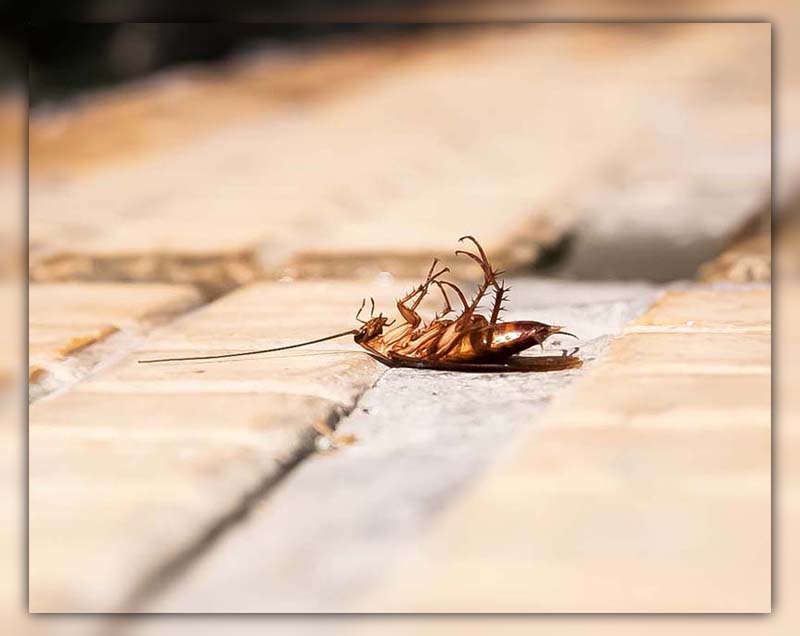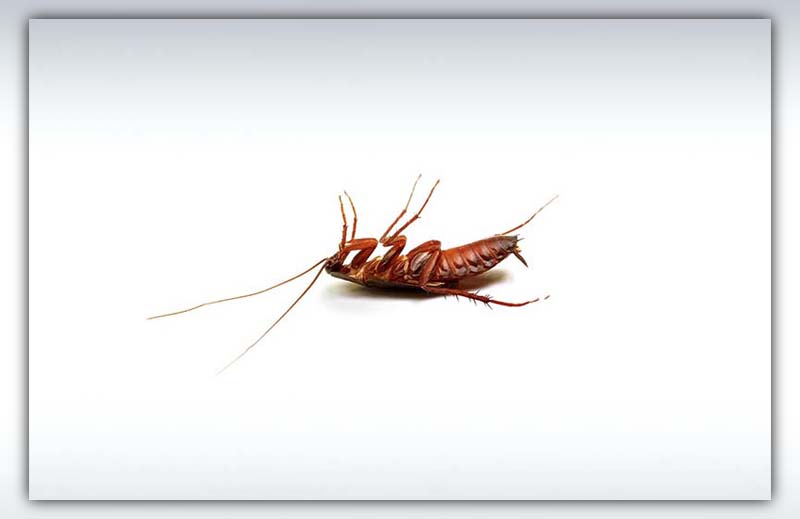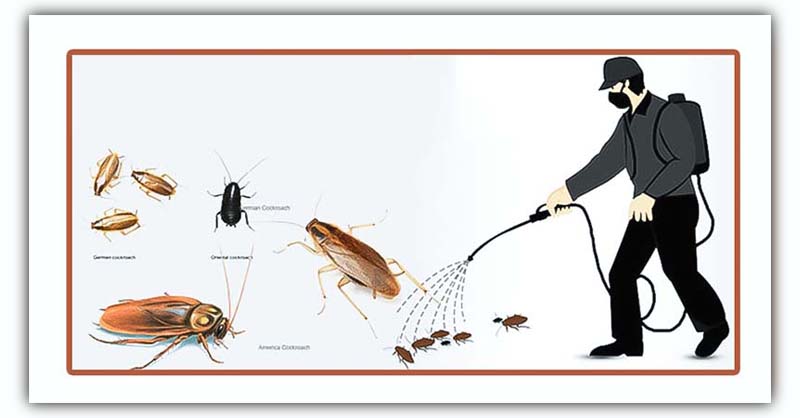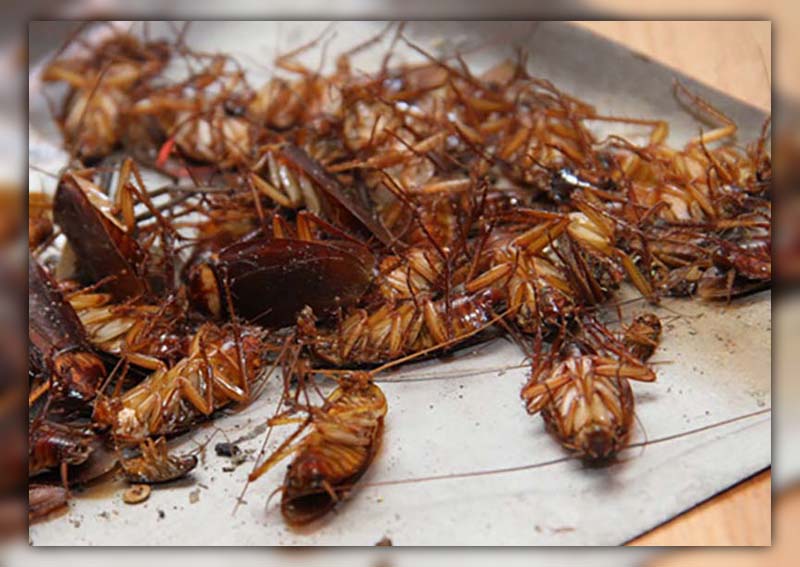From city streets to home kitchens, many have witnessed the sight of a cockroach on its back.
Discover what it truly means and if the age-old saying, ‘If a cockroach is on its back, is it dead?’ holds any weight.
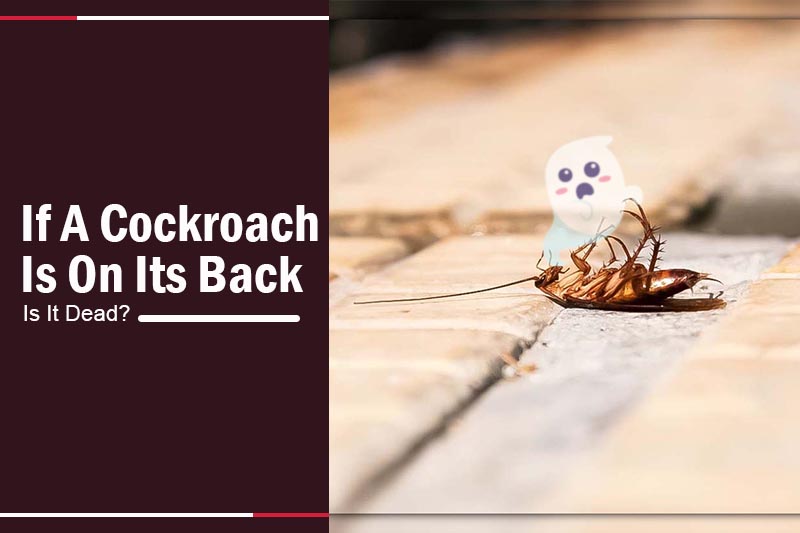
If A Cockroach Is On Its Back, Is It Dead?
Cockroaches can end up on their backs after coming into contact with certain bug sprays. These sprays disrupt their nerve functions, causing muscle twitches and making them lose balance.
This doesn’t immediately mean the cockroach is dead. Often, it’s just stuck and can’t flip over.
Due to their build, cockroaches need something to cling to in order to turn over.
If they’re on a smooth surface, they might remain flipped over and eventually die from not getting food or water. So, seeing a cockroach on its back often means it’s in trouble.
>> Read more: Does bleach kill roaches? Debunking Pest Control Myths.
Why Are Cockroaches Upside Down When They Die?
Inside homes, many cockroaches are found lying on their backs when they die. This isn’t due to some natural behavior they exhibit when nearing death. It’s actually a result of the chemicals they’ve come into contact with.
Some insecticides are designed to affect the cockroach’s nervous system. When affected, their muscle control becomes impaired. This leads to strong muscle spasms which can cause the roach to end up on its back.
Cockroaches have most of their weight distributed towards their back. This makes it difficult for them to get back up once turned over. Without any nearby objects to hold onto for support, they can’t easily flip back.
The effects of the poison can sometimes paralyze them for hours or even days. This paralysis stops them from moving or turning themselves upright.
Being in this situation, cockroaches cannot eat, drink, or protect themselves. As a result, they may eventually die from hunger or dehydration.
>> Read more: Finding Dead Roaches: Why Only Corpses in Your Home?
How Does Insecticide Targeting The Nervous System Of Cockroaches?
Neurotoxins are substances that target the nervous system, specifically by exciting nerve cells. Some of these nerve cells interact with ion channels, special proteins that help control the electrical balance in cell walls.
When these nerve cells get excited, they transmit electrical impulses along the nerve. This causes the release of chemical messengers called neurotransmitters. These neurotransmitters can send instructions to various cells, such as:
- Muscle cells
- Other nerve cells
- Cells in glands
For instance, if a cockroach decides to move its leg, its brain relays an instruction through the ion channels in the cell wall. This results in the release of neurotransmitters, which tell the muscle cells what to do. The cockroach’s leg then moves in a super quick response, within microseconds.
However, this efficient system gets disrupted when cockroaches come in contact with insecticides. The harmful neurotoxin in the insecticide interferes with a key enzyme in the signal transmission process called acetylcholine (ACh).
How Does Insecticide Cause Cockroaches To Invert Themselves?
Acetylcholine is a crucial neurotransmitter that’s responsible for various involuntary actions, such as:
- Widening blood vessels
- Reducing heart rate
- Triggering reactions in smooth muscles
- Reducing activity in some muscles
However, when neurotoxins affect acetylcholine, they not only break it down but also cause it to multiply.
As per findings in the Journal of Insect Physiology, insecticides can lead to a 300% increase in ACh levels in the cockroach’s thorax. This surplus of acetylcholine is the culprit behind muscle spasms.
With too much acetylcholine present, neurotransmitters excessively activate the muscle cells. As a result, instead of making a slight movement, the cockroach experiences intense full-body tremors, which can cause it to turn over onto its back.
>> Read more: Does cockroach have blood? Roach Biology Revealed
Can Cockroach Be Alive On Its Back?
Seeing a cockroach on its back doesn’t necessarily mean it’s dead. The cockroach may still be alive, but paralyzed and unable to right itself.
Trapped in this prone position, it becomes vulnerable to dying from natural causes like starvation or dehydration.
Predators may also take advantage of an immobilized cockroach stuck on its back, leading to death.
How Cockroaches Die in Nature?
It might surprise you, but wild cockroaches often don’t die belly-up. More often, they end up as a meal for a predator.
Moreover, if a cockroach reaches its end due to natural causes or “old age”, it can indeed die with its underside touching the ground.
So, to clear up any myths, there’s no mysterious force that flips roaches onto their backs when they die.
Conclusion
In summary, the age-old query, “If a cockroach is on its back, is it dead?” is not as straightforward as it might seem.
While insecticides and their effects on the cockroach’s nervous system often result in these creatures ending up on their backs, it doesn’t necessarily signal their immediate demise.
Just like any other aspect of nature, the behavior and reactions of cockroaches offer intriguing insights.
We’d love to hear your own experiences and stories about these resilient insects. If you found this blog enlightening, be sure to explore more insightful articles from Pestweek.

Calina Mabel has over 15 years of experience in the field of journalism and communications. Currently, Calina Mabel is the Content Writer for categories such as Cockroach, Ants, Bed Bugs, Mosquito, Rodent, Termite, and Flies on Pestweek.com. She aims to build content for these categories with a focus on providing valuable and accessible information to readers, in order to create the world’s largest knowledge community about Pests.
All content written by Calina Mabel has been reviewed by Emily Carter.


